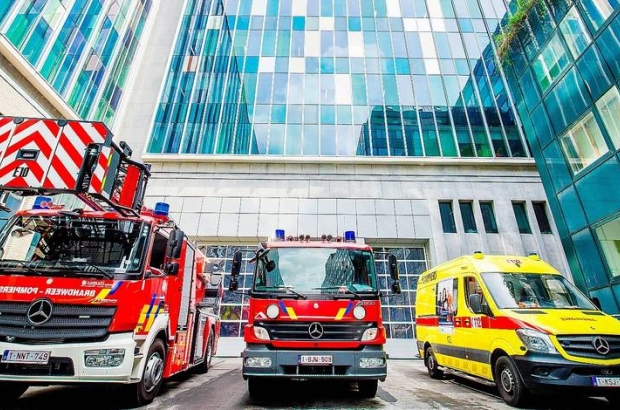- Daily & Weekly newsletters
- Buy & download The Bulletin
- Comment on our articles
Brussels adopts new law to quieten ambulance sirens
In a little more than a year, the sirens on emergency vehicles in Brussels will become quieter.
The Brussels government has decided that, from January 2025, noise levels of all new emergency vehicles in the Brussels region must not exceed 100 decibels in the day, or 90 decibels at night (between 22.00 and 07.00).
“This is an ambitious level that will make a difference and ensure better sleep quality for Brussels residents,” Brussels environment minister Alain Maron (Ecolo) said, following MPs’ adoption of the new decree.
“By reducing noise in the city, we are also protecting the hearing of Brussels residents and we are reducing their stress and anxiety levels. In short, we are protecting their physical and mental health and improving their quality of life.”
More than 2,000 vehicles (outside the private sector) that circulate in the region are equipped with sound devices. As well as ambulances, these include police vehicles and fire brigade lorries – with Brussels public transport company and electricity and natural gas operator Sibelga using sirens too.
But sirens are not currently bound by a noise limit, even though the noise they make can have serious health effects, especially on hearing and sleep quality.
A 2017 Brussels Environment survey revealed that sirens were one of the main noise-related nuisances upsetting people living in the capital, only just beaten by overflying aircraft and traffic noise.
The research also noted that people living in Brussels complained significantly more about noise than residents in Flanders or Wallonia.
“Brussels residents should be able to live and relax in a quiet environment, both on the outskirts of the city and in the city centre,” Maron, who proposed the new measures, said.
“That is the aim of our many consultations, thanks to which a legal framework now exists to limit the volume of emergency vehicles’ sirens.”
The limit given the green light was subjected to a series of acoustic tests. These ensured that the sirens remained audible to other vehicles and road users, and that the emergency services could continue to carry out their work safely.



















Comments
What about the tuned scooters and motorcycles and cars? Shouldn't the noise rules apply first to these, and then to the emergency vehicles ?